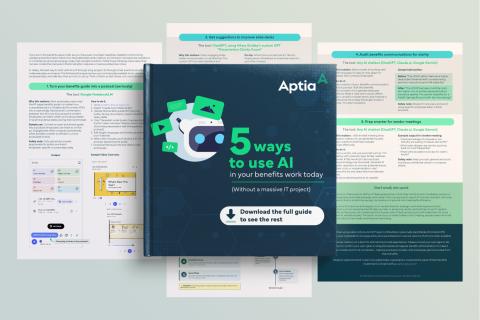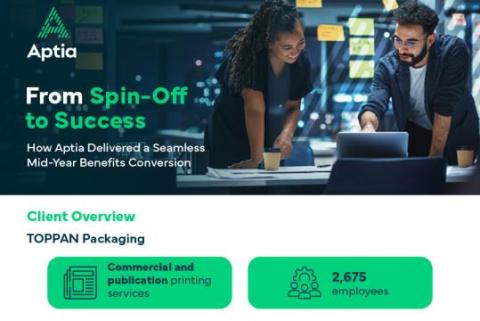It’s time to complete Lloyds 3 – and end pension schemes’ GMPE saga

This year marks half a decade since the Lloyds 3 judgment clarified Guaranteed Minimum Pension equalisation (GMPE) for pension schemes.
Yet many schemes have barely started to address the particular pension inequalities that arise from Lloyds 3.
We’ve already set out the case for settling the saga of GMPE. In this article, we’ll look at why Lloyds 3 is an essential part of achieving this – and how to do it.
Here are our key points:
- The Pensions Ombudsman has said that GMPE, including Lloyds 3, should be completed in a “reasonable” amount of time
- The Pensions Regulator may now take a closer interest in GMPE and Lloyds 3
- If your scheme is targeting buyout or other derisking options, you need to plan Lloyds 3 well in advance
- There is limited capacity in the market for this work, so act now while the resources are there to support you
- As an industry, we’ve taken too long over this – it’s time to correct these inequalities and move on
First, let’s take a look at the Lloyds 3 judgment.
In November 2020 the High Court ruled that past transfers should be part of GMPE. The judgment is known as Lloyds 3 because it was the third case brought by Lloyds Banking Group seeking to clarify its GMPE obligations.
The judgment said:
- There was no time bar on trustees’ duty to make top-up payments
- All transfer values paid since 17 May 1990 were potentially in scope
- Transferred-in benefits should be equalised
Pension schemes have put off Lloyds 3
The ruling tied up several loose ends for GMPE and should have enabled us all to press on with equalising GMPE inequalities. But even those pension schemes that have made headway on their main GMPE project have often put off dealing with past transfers under the Lloyds 3 cases.
There are various reasons for this, including some parties playing down the importance of Lloyds 3 compared to other scheme activities, and sometimes an uninformed belief that Lloyds 3 could wait until other GMPE work was finished without creating any issues.
That position is no longer sustainable, and schemes need to get started. You can read more about this ruling, its implications and potential interest from regulatory authorities in our earlier insight (here again for good measure).
Away from regulation, there are plenty of other reasons to address Lloyds 3 inequalities.
Lloyds 3 liabilities can derail derisking plans
If you are one of the many defined benefit schemes hoping to achieve buyout, buy-in or wind-up to secure your members’ benefits, you can’t put off Lloyds 3. A bulk purchase insurer is unlikely to consider your scheme (or offer the best pricing terms) if these liabilities aren’t well understood and (ideally) resolved – and we have seen projects delayed for this reason.
We have helped a number of pension schemes assess and resolve their Lloyds 3 liabilities in compressed timeframes before risk transfer deadlines. If we hadn't, some of these deals would have fallen over or suffered significant changes to costs and prices.
So, yes, we can move quickly on some smaller schemes that have good data and lower volumes of impacted members (an unknown until assessment work has started). But the risk and stress for all parties were unnecessary, and there isn’t always time or capacity to save these situations.
Aptia’s expert team has the capacity
Given limited capacity for projects in the pensions market and rising demand, we have put together a specialist team to deal with Lloyds 3, covering cash equivalent transfer values (CETVs) and other members with no further liability (deaths and trivial commutations).
This has two main advantages:
- Lloyds 3 is covered separately from your other projects, so they aren’t affected by the extra work and can be completed side by side
- Because the team members specialise in Lloyds 3, they understand the demands of getting this work done. And they have experience of different pension schemes, stakeholders and processes to draw up a plan and deliver the project smoothly
Lloyds 3 projects can be tricky and take time
In some ways, Lloyds 3 is less complex than other aspects of GMPE, but the work has its own demands and, though we aim to minimise this, it can be labour intensive.
Because these members transferred out decades ago, they often haven’t updated their addresses and other personal details. This means we need to trace them, using good, tried and tested communications and approaches to help with member responses.
When we find the correct ex-member, they are often wary about being approached out of the blue, especially if the pension scheme now has an unfamiliar name. The public are also increasingly wary about scams. We use our experience to help clients navigate these challenges.
These practicalities with Lloyds 3 projects mainly relate to the passage of time, so starting sooner helps to prevent projects getting more complicated due to further ageing of records and ex-members.
Members have waited long enough
For some members, the uplift in their benefits will be small, but some can be more substantial. With household budgets squeezed, they shouldn’t have to wait for their money and, as we mentioned earlier, we are now seeing complaints to the Ombudsman about lack of progress on Lloyds 3.
It’s time we all worked to rectify these pension inequalities. So, build Lloyds 3 into your plans, make use of our expert team and start now to ward off nasty surprises or delays with your wider pensions plans and strategy.
The content provided in our publications, including articles on our website and podcasts, is intended solely for informational purposes. It should not be construed as professional advice and should not be relied upon for any purpose. We strongly recommend seeking appropriate professional advice tailored to your specific circumstances before making any decisions based on this information.



